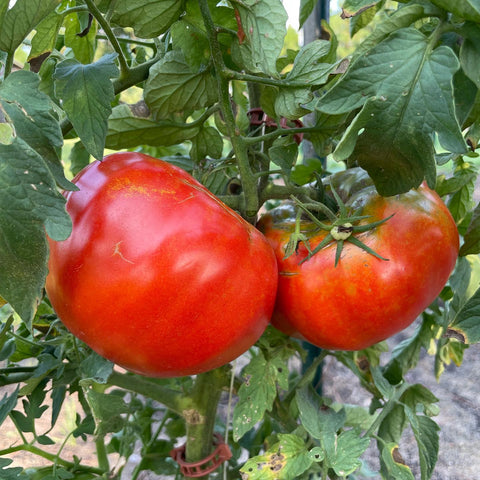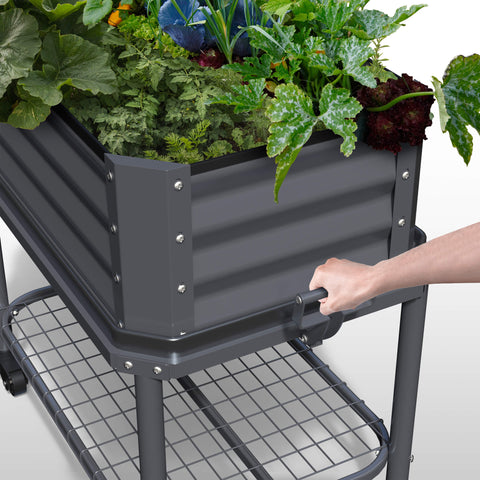As the allure of nature and sustainable living continues to captivate homeowners, the desire to create a vibrant outdoor sanctuary becomes more pronounced. If you're aiming to infuse your outdoor space with greenery and elevate its aesthetic appeal, look no further than raised garden beds. These versatile structures offer not only a practical solution for cultivating plants but also a canvas for artistic expression. In this blog post, we'll guide you through the process of seamlessly incorporating raised garden beds into your existing outdoor space, creating a harmonious and sustainable landscape that reflects your unique style. From design inspiration to eco-friendly practices, we'll explore ways to integrate raised beds and breathe new life into your surroundings.The following content also has some reference value for raised garden beds.

1. Design Integration: Aesthetic Bliss
When introducing raised garden beds into your outdoor space, design integration is key to achieving a seamless and harmonious look. Consider the following design tips:
a. Visual Cohesion
Align the design of your raised garden beds with the overall theme of your outdoor space. Whether your style is modern, rustic, or eclectic, choose raised beds that complement existing features such as furniture, architectural elements, and color schemes.
b. Proportional Harmony
Opt for raised garden beds that are proportionate to your outdoor space. Too many or overly large beds may overwhelm the area, while too few or small beds may seem inconspicuous. Strike a balance that ensures a pleasing visual impact.
c. Layered Heights
Create depth and dimension by incorporating raised beds of varying heights. This layering effect not only adds visual interest but also enables you to display a diverse range of plants, from cascading flowers in tall beds to ground-covering herbs in shorter ones.
2. Sustainable Practices: Nurturing the Environment
Raised garden beds can be a cornerstone of sustainable landscaping. Implement eco-friendly practices to enhance the environmental impact of your outdoor oasis:
a. Water Conservation
Line the interior of your raised beds with a moisture-retaining barrier, such as landscape fabric or recycled plastic, to minimize water loss through drainage. This encourages efficient water usage and reduces the need for frequent watering.
b. Composting
Integrate composting directly into your raised beds by adding organic materials like kitchen scraps, leaves, and grass clippings. Composting enriches the soil and reduces waste, creating a closed-loop system that benefits both your plants and the environment.
c. Mulching
Apply organic mulch around the base of plants to conserve moisture, suppress weed growth, and regulate soil temperature. Mulching not only enhances plant health but also contributes to a sustainable and low-maintenance landscape.
d. Companion Planting
Embrace companion planting techniques within your raised beds. Pairing compatible plants enhances biodiversity, deters pests naturally, and promotes healthier growth, reducing the need for chemical interventions.

3. Functional Integration: Beyond Planting
Raised garden beds can serve a multitude of functions beyond traditional planting. Here are innovative ideas to maximize the utility of your raised beds:
a. Vertical Gardening
Convert the sides of your raised beds into vertical gardening spaces. Attach trellises, hooks, or wire mesh to support climbing plants like tomatoes, cucumbers, or beans, effectively utilizing the vertical dimension and saving ground space.
b. Herb Spiral
Craft a spiral-shaped raised bed for herbs. This captivating design optimizes space by providing various microclimates within a compact area, allowing you to grow a diverse collection of herbs with varying sun and water requirements.
c. Raised Seating
Combine functionality with aesthetics by integrating raised seating areas into your garden beds. Design benches or seating ledges along the edges of the beds, inviting you to immerse yourself in the garden while enjoying a comfortable respite.
d. Edible Landscaping
Transform your raised beds into a feast for the senses by incorporating edible landscaping. Interplant vegetables, fruits, and herbs alongside ornamental plants to create a visually stunning and productive garden.
4. Artistic Expression: Personalizing Your Space
Raised garden beds offer an opportunity to infuse your outdoor space with your unique personality and style. Get creative with artistic elements that enhance the visual appeal:
a. Mosaic Accents
Adorn the sides of your raised beds with mosaic tiles, creating captivating patterns and designs that reflect your artistic flair.
b. Decorative Edging
Choose decorative edging materials such as stones, bricks, or reclaimed wood to add a touch of charm and define the borders of your raised beds.
c. Painted Planters
Paint your raised beds with vibrant colors or intricate patterns to transform them into eye-catching focal points that enliven your outdoor space.
d. Garden Sculptures
Integrate sculptures, statues, or garden art within your raised beds to create a sense of wonder and intrigue, turning your garden into an outdoor gallery.
Conclusion: Elevate Your Outdoor Space with Raised Garden Beds

Seamlessly integrating raised garden beds into your existing outdoor space is a journey of creativity and transformation. From design cohesion and sustainable practices to functional innovations and artistic expression, these versatile structures empower you to craft a harmonious and sustainable landscape that resonates with your lifestyle.









